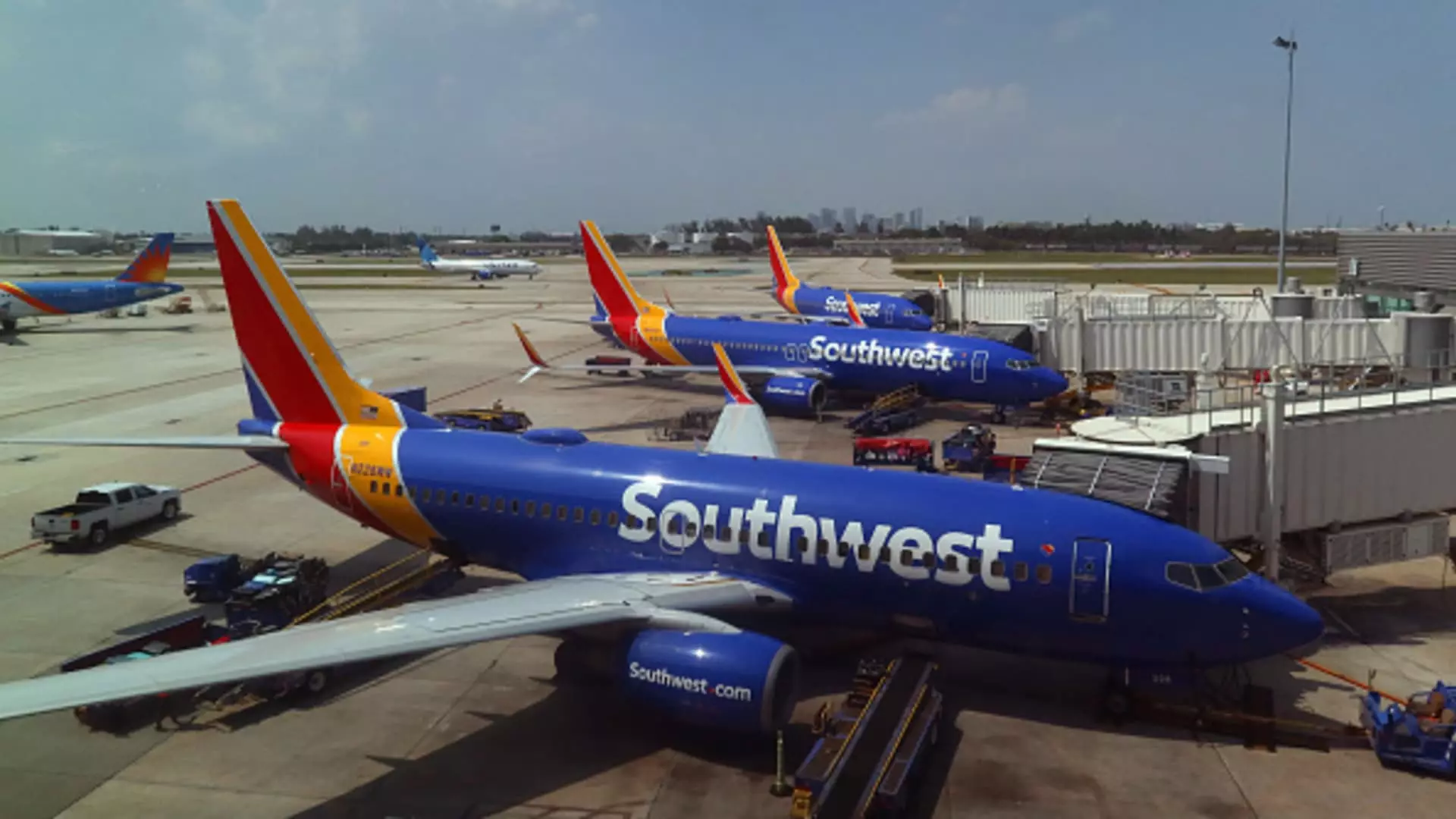Southwest Airlines recently announced a potential drop in unit revenue for the third quarter due to an oversupplied U.S. market. The airline expects unit revenue to decrease by as much as 2% compared to last year. Additionally, non-fuel costs are forecasted to rise by up to 13%, putting further pressure on the airline’s financial performance. These challenges are expected to persist through the end of 2024, resulting in a 4% decrease in Southwest’s share price in premarket trading on Thursday.
In the second quarter, Southwest Airlines reported mixed results compared to Wall Street expectations. While the airline exceeded earnings per share estimates by reporting 58 cents adjusted compared to an expected 51 cents, its revenue of $7.35 billion was slightly below the expected $7.32 billion. Despite achieving record revenue of $7.35 billion, Southwest experienced a more than 46% drop in profit to $367 million or 58 cents per share. The airline’s revenue per available seat mile, a key indicator of pricing power, decreased by 3.8%, aligning with Southwest’s revised forecast from the previous month.
External and Internal Factors Impacting Performance
Southwest Airlines attributed its second-quarter performance to a combination of external and internal factors. CEO Bob Jordan acknowledged that the results fell short of the airline’s capabilities, indicating room for improvement. The airline is currently engaged in discussions with Boeing regarding compensation for delayed aircraft deliveries, which have been impacted by safety and manufacturing issues. Southwest now anticipates receiving only 20 deliveries from Boeing this year, significantly less than previously projected.
Pressure from Investors and Business Model Changes
In response to investor pressure, particularly from Elliott Investment Management’s $2 billion stake in the company, Southwest Airlines is undergoing a strategic overhaul to increase revenue. The airline recently announced significant changes to its business model, including the elimination of open seating, the introduction of seats with extra legroom on Boeing aircraft, and the addition of overnight flights. These changes, set to roll out next year, aim to align Southwest more closely with its network carrier competitors.
Other major airlines, such as Delta Air Lines and United Airlines, are also anticipating shifts in the U.S. market. Executives from these carriers expect U.S. capacity to moderate in the coming months, potentially leading to higher fares across the industry. As airlines navigate the challenges posed by an oversupplied market, adapting to changing consumer demands and market dynamics will be crucial for long-term success. Southwest Airlines, in particular, faces a critical juncture as it strives to overcome short-term revenue challenges while implementing transformative initiatives for sustained growth.

